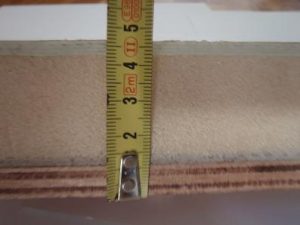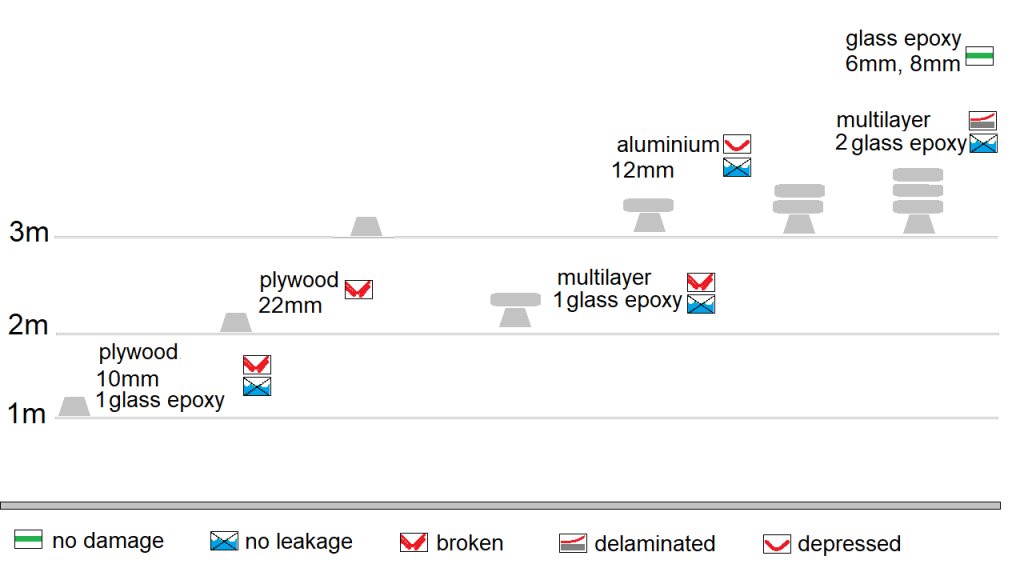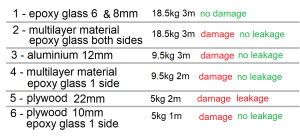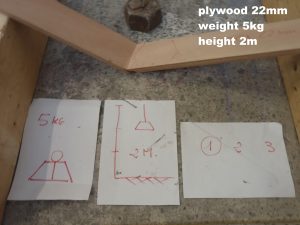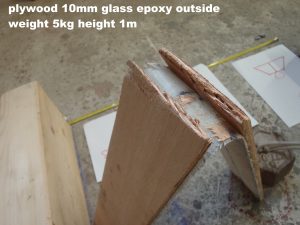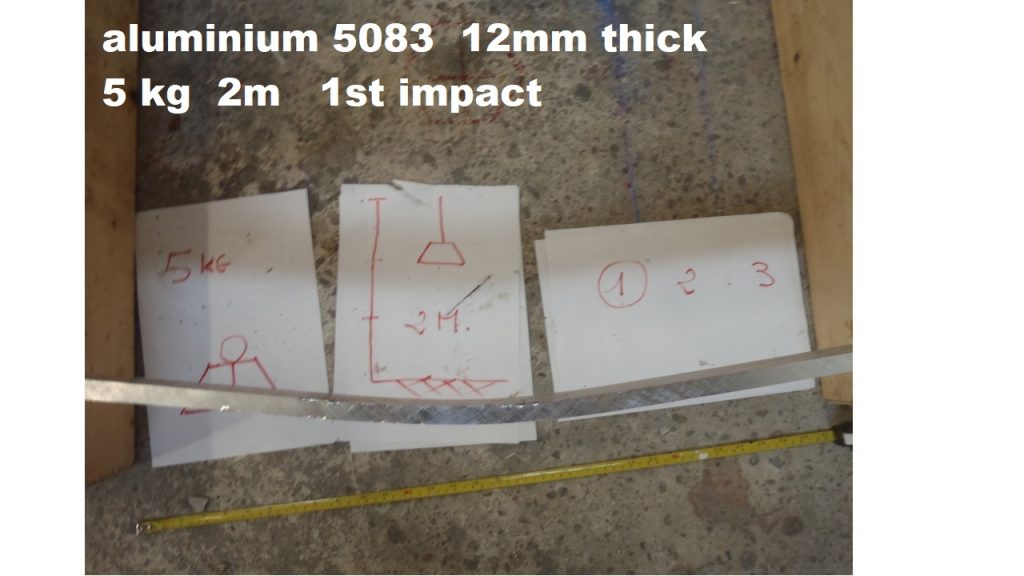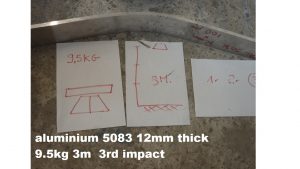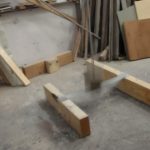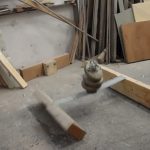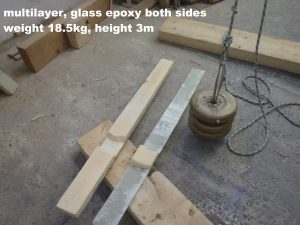In a former post we presented our impact tests on several hull materials. We now analyze the results.
Graphical results
Strongest materials are in the top right corner, weakest are bottom left
Ranking of materials
From strongest to weakest
Plywood
Plywood 22mm thick is typically used for the bottoms of hulls, sometimes for the sides.
It does not stand impacts. The material does not accept important bending, it breaks.
Special plywood (e.g. , marine), epoxy coating, etc. does not improve significantly the impact resistance.
The external glass epoxy protection does not improve resistance, it only prevents immediate flooding. Note that aramide is not much stronger than fiberglass, only lighter.
Note. with a glass coating on both faces, the plain plywood becomes a sandwich and the impact resistance increases markedly.
Aluminum
The aluminum alloy 5083 12mm thick is typically used for the sides of the hull, sometimes for the bottom.
It stands well impacts. Above some threshold, the impact energy is absorbed by the material, in the form of deformation and heat.
When the metal is thick (12mm in our test), there is no leakage. However I have seen aluminum hulls leaking after touching rocks.
The counterpart is that aluminum is quickly damaged by impacts (pokes, depression). As the impact energy increases the material is deformed beyond reparation.
Fiberglass epoxy
Fiberglass epoxy 10mm to 15mm thick is typically used for sides and bottoms of hulls.
Glass epoxy planks 6mm and 8mm thick could stand the highest impact energy in our test. The material is elastic and flexes a lot without damage
However, flexible panels are not suitable for the hulls of cruising boats. Thicker panels, sufficiently rigid, are likely to stand higher impact energy, but when they break the damage may be important.
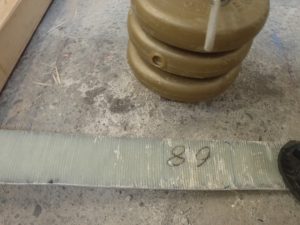
Multilayer with glass epoxy on both faces
This material is used for the sides of Sonabia 2´s hull.
From interior to exterior: - plywood sandwich. 10mm plywood with 2mm of glass epoxy on both sides - PVC foam 30mm thick (bricks 125x25cm with glass-epoxy walls). - external glass-epoxy 4mm thick
This material stands well impacts, even better than aluminium. At the highest energy of out test, the external glass layer separates from the foam and the foam is locally broken.
The inner plywood sandwich and the external glass-epoxy layer are unaffected (see video). In other terms, there is no leakage.
Part of the energy is absorbed by the foam (local breakage) and the detachment of the external glass-epoxy. Both damages are easy to repair.
